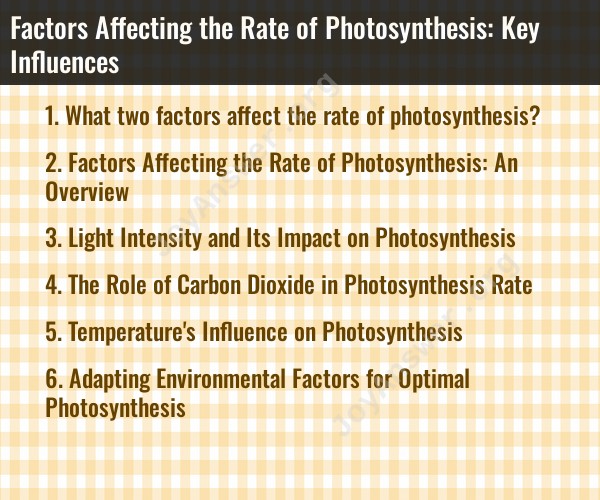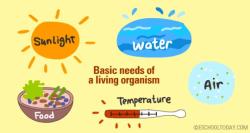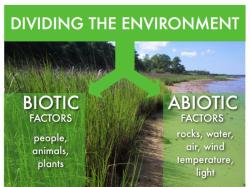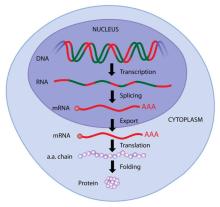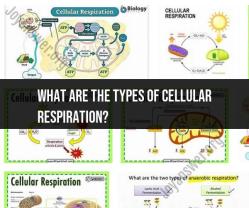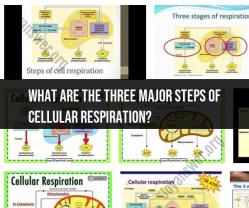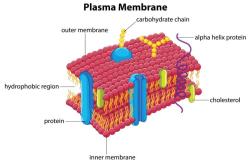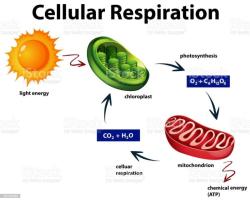What two factors affect the rate of photosynthesis?
Photosynthesis is a complex biochemical process by which green plants, algae, and some bacteria convert light energy into chemical energy (glucose) using carbon dioxide and water. Several factors can influence the rate of photosynthesis, but two of the most significant factors are:
Light Intensity: Light is the primary source of energy for photosynthesis. As light intensity increases, the rate of photosynthesis generally increases. However, this relationship is subject to the concept of the limiting factor. Light can become a limiting factor if it's not available in sufficient quantity for the process to proceed at its maximum rate. Factors like cloud cover, the angle of sunlight, and the presence of shading can affect light intensity.
Carbon Dioxide (CO2) Concentration: Carbon dioxide is one of the essential reactants in photosynthesis. When the concentration of CO2 in the surrounding environment is low, it can limit the rate of photosynthesis. Increasing the level of carbon dioxide can enhance the rate of photosynthesis up to a point, provided that other factors like light and temperature are not limiting.
These two factors are often summarized by the principle of the Law of Limiting Factors, which states that the rate of photosynthesis is limited by the factor that is in the shortest supply relative to the needs of the process. In other words, the factor that is at a suboptimal level compared to the other factors will limit the overall rate of photosynthesis.
Other factors that can influence the rate of photosynthesis include:
Temperature: Photosynthesis is a temperature-dependent process. Enzymes responsible for photosynthesis have optimal temperature ranges. When it's too cold or too hot, the rate of photosynthesis decreases.
Water Availability: Water is essential for photosynthesis, and its availability can affect the rate of the process. Plants can close their stomata to conserve water, which can limit CO2 intake and photosynthesis.
Nutrient Availability: Nutrients like minerals and nitrogen can influence the health of plants and, in turn, their ability to photosynthesize.
Oxygen Concentration: While oxygen is a product of photosynthesis, high levels of oxygen in the environment can sometimes inhibit the process.
pH (Acidity/Alkalinity): The pH level of the plant's environment can influence the activity of enzymes involved in photosynthesis. Most plants have an optimal pH range for photosynthesis.
Plant Factors: The species and genetic characteristics of the plant can also affect the rate of photosynthesis. Some plants are adapted to perform well under specific environmental conditions.
In summary, the rate of photosynthesis is a complex interplay of various factors, but light intensity and carbon dioxide concentration are typically the most crucial factors that directly affect the process. When both of these factors are optimal, other limiting factors may become more significant in determining the rate of photosynthesis.
Factors Affecting the Rate of Photosynthesis: An Overview
Photosynthesis is the process by which plants use sunlight, water, and carbon dioxide to produce oxygen and energy in the form of sugar. The rate of photosynthesis is affected by a number of factors, including:
- Light intensity: Light intensity is one of the most important factors affecting the rate of photosynthesis. As light intensity increases, the rate of photosynthesis also increases, up to a point. Beyond this point, the rate of photosynthesis remains constant or even decreases.
- Carbon dioxide concentration: Carbon dioxide is another important factor affecting the rate of photosynthesis. As carbon dioxide concentration increases, the rate of photosynthesis also increases, up to a point. Beyond this point, the rate of photosynthesis remains constant or even decreases.
- Temperature: Temperature also affects the rate of photosynthesis. As temperature increases, the rate of photosynthesis also increases, up to a point. Beyond this point, the rate of photosynthesis decreases sharply.
- Water availability: Water is necessary for photosynthesis to occur. However, water availability does not typically limit the rate of photosynthesis in most plants.
Other factors that can affect the rate of photosynthesis include nutrient availability, leaf structure, and plant age.
Light Intensity and Its Impact on Photosynthesis
Light intensity is one of the most important factors affecting the rate of photosynthesis. As light intensity increases, the rate of photosynthesis also increases, up to a point. This is because light provides the energy that plants need to power the photosynthesis process.
Beyond this point, the rate of photosynthesis remains constant or even decreases. This is because plants have a limited capacity to absorb light energy. If light intensity is too high, it can damage the plant's photosynthetic apparatus.
The Role of Carbon Dioxide in Photosynthesis Rate
Carbon dioxide is another important factor affecting the rate of photosynthesis. As carbon dioxide concentration increases, the rate of photosynthesis also increases, up to a point. This is because carbon dioxide is a substrate for the photosynthesis process.
Beyond this point, the rate of photosynthesis remains constant or even decreases. This is because plants have a limited capacity to absorb carbon dioxide. If carbon dioxide concentration is too high, it can saturate the plant's photosynthetic enzymes.
Temperature's Influence on Photosynthesis
Temperature also affects the rate of photosynthesis. As temperature increases, the rate of photosynthesis also increases, up to a point. This is because temperature affects the rate of enzymatic reactions.
Beyond this point, the rate of photosynthesis decreases sharply. This is because high temperatures can damage the plant's photosynthetic apparatus.
Adapting Environmental Factors for Optimal Photosynthesis
Plants have a number of adaptations that allow them to optimize photosynthesis under different environmental conditions. For example, some plants have leaves that are oriented to maximize light absorption. Other plants have leaves that are modified to reduce water loss in hot, dry environments.
Humans can also adapt environmental factors to optimize photosynthesis in crop plants. For example, farmers can use greenhouses to control the temperature and light intensity for their crops. Farmers can also use irrigation to ensure that their crops have adequate water.
By understanding the factors that affect the rate of photosynthesis, we can better manage plant growth and productivity in both natural and agricultural ecosystems.
